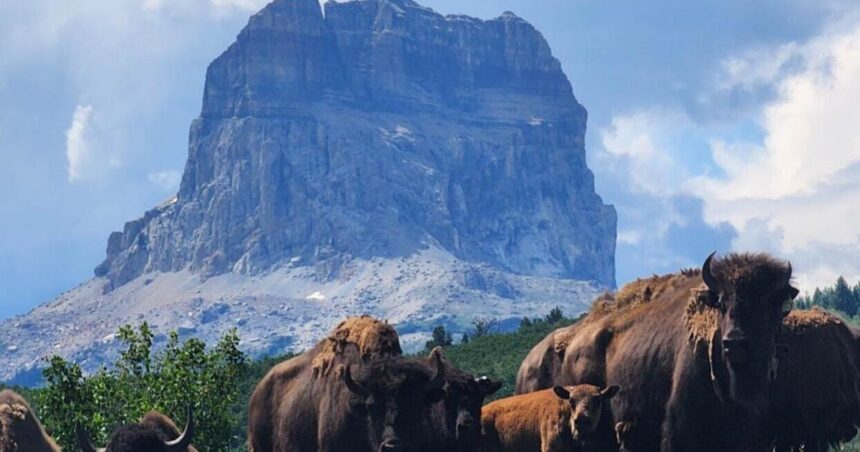The Blackfeet Tribal Business Council in late May passed a resolution closing public access to Chief Mountain, an area steeped in Blackfoot cultural significance.
The resolution specifically closes the 1-mile radius surrounding the mountain’s base and states that only Blackfoot people using the area for cultural or spiritual purposes are allowed access. Hunting will also be allowed in the area during the appropriate seasons.
Located in the northwest corner of the Blackfeet Reservation and bordering Glacier National Park, Chief Mountain (Ninaistako in the Blackfoot language) towers above the landscape at 9,085 feet.
Gheri Hall is the deputy of compliance for the Blackfeet Tribal Historic Preservation Office, the entity responsible for protecting cultural sites on the reservation.
People are also reading…
She said according to Blackfeet stories, Chief Mountain is home to Thunderbird, a legendary supernatural creature.
Last summer, the tribe released wild bison near Chief Mountain in a historic ceremony. And Hall said tribal members regularly visit the area to participate in fasting rituals — a tradition that has persisted for thousands of years.
The issue of Chief Mountain access, Hall said, has been contentious for decades.
As Glacier National Park attracted more tourists, some visitors interrupted fasting ceremonies on Chief Mountain, causing Blackfoot participants to start over entirely or be forced to relocate.
In the 1980s, Chief Earl Old Person closed the 1-mile radius around the mountain’s base with some exceptions. As the years went on, restrictions loosened.
In the 1990s, the council again restricted access to the area. In that resolution, Hall said leaders wrote that tourists and “curiosity seekers” threatened the heritage of the tribe.
“It became necessary to close the Chief Mountain area,” she added.
Since then, restrictions have again loosened, and up until recently, the closure was not enforced.
But tensions rose this summer as more outfitter groups began taking tourists to Chief Mountain.
“We don’t want anybody profiting off our cultural sites,” Hall explained. “This is an ongoing issue. And we have to make sure our cultural sites aren’t damaged.”
Hall said the tribe plans to post signs near the mountain’s base alerting tourists and community members to the change. The tribe also notified outfitters working in the area. And Hall said the tribe and Historic Preservation Office are working with Glacier National Park to determine what the closure means for park visitors.
Several groups — including the Blackfeet Tribal Historic Preservation Office, Blackfeet ECO Knowledge and Blackfeet Fish and Wildlife — work in the Chief Mountain area, and Hall said those organizations will help enforce the closure.
“For the most part, people are happy to comply,” she said.
To learn more about the Blackfeet Tribal Historic Preservation Office, visit Blackfeet-THPO.com.





